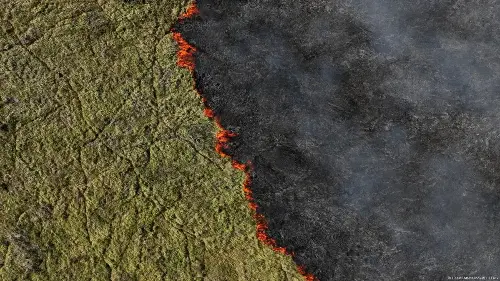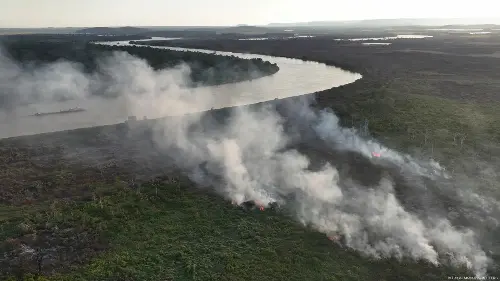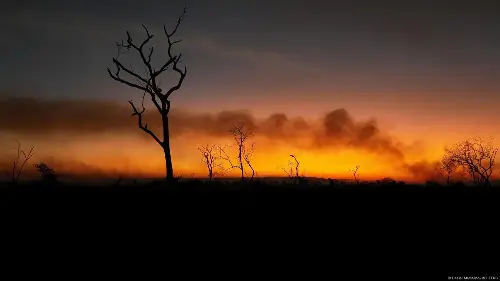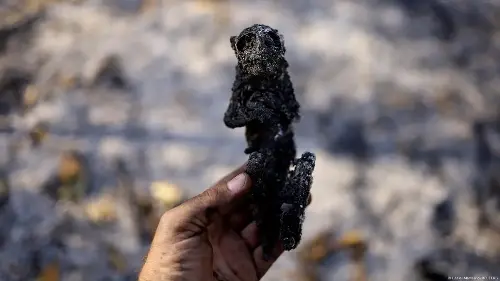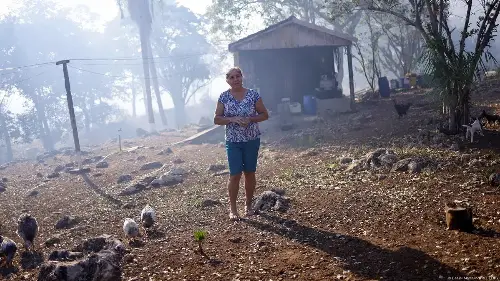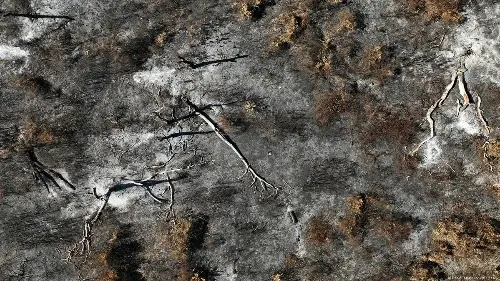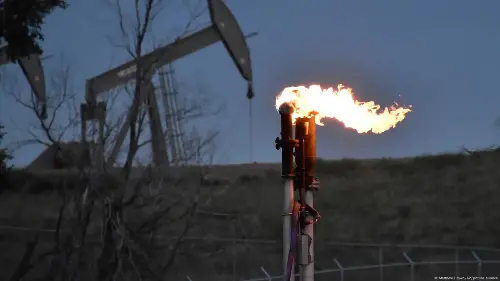
What's colorless, odorless, is the main component of natural gas and traps massive amounts of heat in the atmosphere?
The answer is methane or CH4.
Over a 20-year timescale, methane traps around 84 times as much heat as carbon dioxide (CO2), which is released by burning fossil fuels and is probably the most famous greenhouse gas of all.
The key difference between them is how long they stick around. On average, methane fades away after about 12 years while CO2 continues to warm the planet over centuries.
That means CO2 is the main contributor to climate change, but potent methane still wreaks plenty of havoc in its short lifetime. It's responsible for about a third of global warming since the Industrial Revolution.
Where does methane come from?
Methane does sometimes come from non-human sources like wetlands.
These habitats contain things like permafrost, which is frozen ground that's also filled with carbon from animals and plants that have been dead for hundreds of thousands of years.
As temperatures rise with global warming, wetland permafrost thaws. That unleashes carbon, previously locked in the ice, in the form of CO2 and methane.
But 60% of the methane that makes it into the atmosphere comes from human activities. That can be from agriculture — think cows' burps and farts and manure fertilizer — but also from decomposing waste in landfills and the energy sector.
How does the energy sector release methane?
Most energy consumed by humans comes from burning fossil fuels like coal, oil and gas.
Oil and gas are responsible for most energy sector methane emissions. The greenhouse gas pours out when companies produce, transport and store these fossil fuels.
Methane emissions can happen unintentionally. For example, it often escapes into the atmosphere when the equipment is rusty or damaged or even has something as simple as a loose screw.
Then there is gas flaring. That's when operators burn off natural gas linked to oil production. Flaring turns methane into CO2 that then goes into the atmosphere, but raw methane can still escape during the process.
Sometimes companies release small amounts of natural gas directly into the atmosphere, which is called venting.
Operators flare and vent because it can be expensive to process and transport the relatively small amount of gas that comes out of the ground during oil extraction. Or they do it for safety reasons, such as to reduce dangerous pressure increases.
What can we do to reduce methane emissions?
The solutions can be surprisingly simple at times. Oil and gas companies could slash their methane emissions by a whopping 75% if they spotted and fixed leaks, according to the International Energy Agency. It quite literally comes down to plumbing and updating faulty equipment.
That's why the European Union passed a new regulation in May that will force fossil fuel companies to routinely measure, report and reduce how much methane they are emitting. If they spot a leak, they need to fix it within 15 working days.
The regulation also bans flaring and venting in most cases. Venting is only allowed if there is a safety emergency. Flaring can only happen if it's not technically possible to reinject the natural gas into the ground on-site or transport it somewhere else.
Edited by: Jennifer Collins
